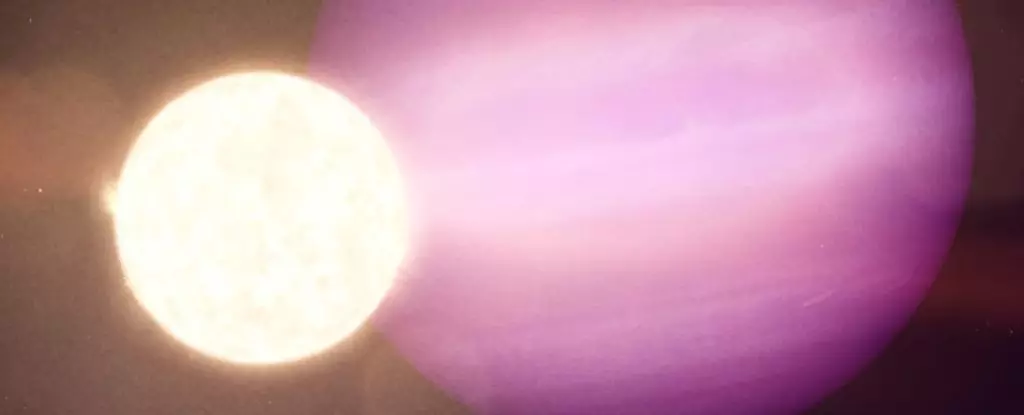In the realm of exoplanetary science, the discovery of WD 1856+534 b marks a monumental achievement that highlights the extraordinary capabilities of modern astrophysics. This gas giant, located 81 light-years from Earth, is not only remarkable for its massive size—six times that of Jupiter, classifying it as a “super-Jupiter”—but also for its unique positioning in orbit around a white dwarf star. The recent observations conducted by the James Webb Space Telescope (JWST) using its Mid-Infrared Instrument (MIRI) have illuminated this exotic world, confirming its status as the coldest exoplanet ever recorded.
Unraveling the Mysteries of WD 1856+534 b
The research team, spearheaded by Mary Anne Limbach from the University of Michigan, along with reputable institutions such as MIT and Johns Hopkins University, has utilized the sophisticated infrared capabilities of JWST to characterize the elusive planet. Their groundbreaking findings not only affirm its cold temperature, measured at 186 K (-87 °C), but also unravel significant insights into the nature of planets orbiting white dwarfs. This provides a richer understanding of their physical and chemical properties, essential for future explorations of potentially habitable environments.
A Significant Technological Leap
The JWST’s operational framework is fundamentally designed to delve deep into the universe’s mysteries. Its Direct Imaging Method allows astronomers to peer directly at distant exoplanets, analyzing light reflected from their surfaces or atmospheres to identify chemical signatures that might hint at the presence of life. This technique represents a stark advancement over prior observational capabilities, enabling scientists to analyze planetary environments in unprecedented detail. However, the inherent challenge—isolating the faint light of an exoplanet from the overwhelming brightness of its host star—has historically confined such imaging to the largest planets, like WD 1856+534 b, which are less affected by light pollution due to their size and distance from their stars.
The Uncharted Territory of White Dwarf Systems
Studying white dwarf planetary systems such as WD 1856+534 b opens up new avenues in understanding the fate of planets when their stars reach the end of their life cycle. As these remnants cool and dim, they reduce the stark light contrast that complicates direct observations of planets in orbit. The possibility of observing planets near a white dwarf offers astronomers a rare chance to probe the dynamics and stability of planet-star interactions in a post-main-sequence environment. In their research, the team emphasized how these planetary remnants could yield essential insights into the evolution of formed planetary systems and the potential for habitability well after stellar death.
Revisiting Planet Formation and Migration
The evidence gathered from WD 1856+534 b challenges existing paradigms in exoplanet formation and migration. The recent analysis revealing a mass estimate much lower than prior predictions—capped at six Jupiter masses instead of an overblown 13.8—sheds light on the evolutionary processes that permit such planets to survive close orbiting scenarios around their dying stars. The gravitational dance, accumulated over eons, may lead us to reconsider our thoughts on how gas giants can end up in habitable zones of white dwarfs, possibly paving the way for conditions where life may thrive.
Future Prospects and Broader Implications
The implications of these findings extend beyond mere curiosity; they raise significant questions regarding the habitability of exoplanets in such unconventional settings. As astronomers prepare for additional observations scheduled for 2025, there is a palpable sense of anticipation. These future studies may uncover intriguing new worlds within the same system, ultimately enhancing our understanding of cosmic evolution and the parameters that dictate whether life can exist.
The significance of WD 1856+534 b lies not just in its cold temperature, but in the broader narrative of exoplanet research that it represents. The James Webb Space Telescope continues to break through old boundaries, employing next-generation technology to uncover a wealth of knowledge about these distant worlds. As we peel back the layers of the universe’s complex tapestry, the potential for discovering life beyond our solar system remains ever tantalizing, challenging our perceptions and inspiring generations to come. The future of exoplanet exploration, illuminated by these groundbreaking observations, promises to reshape our understanding of the cosmos and our place within it.

